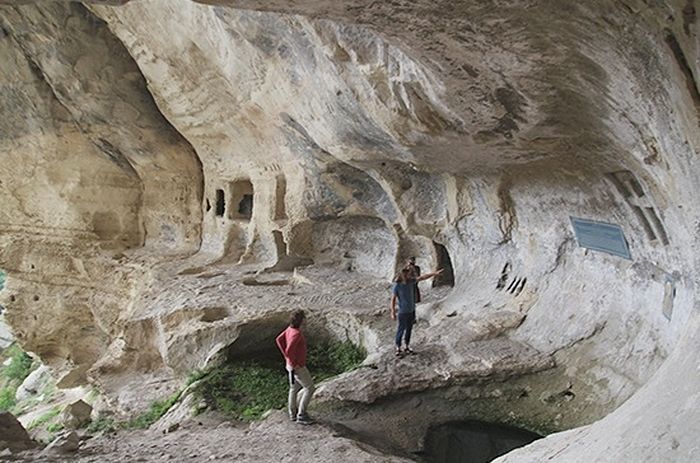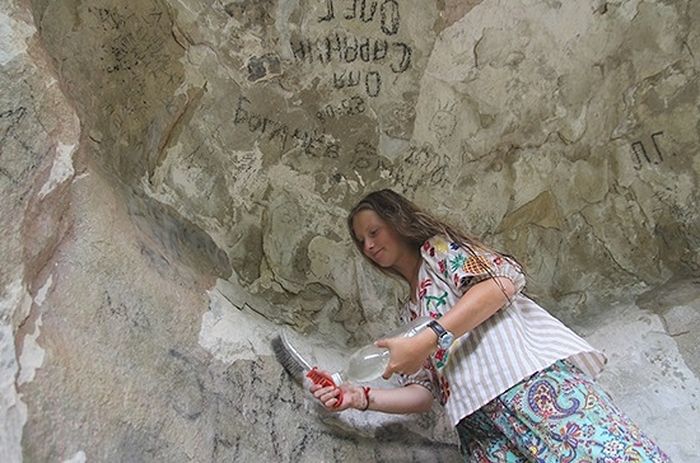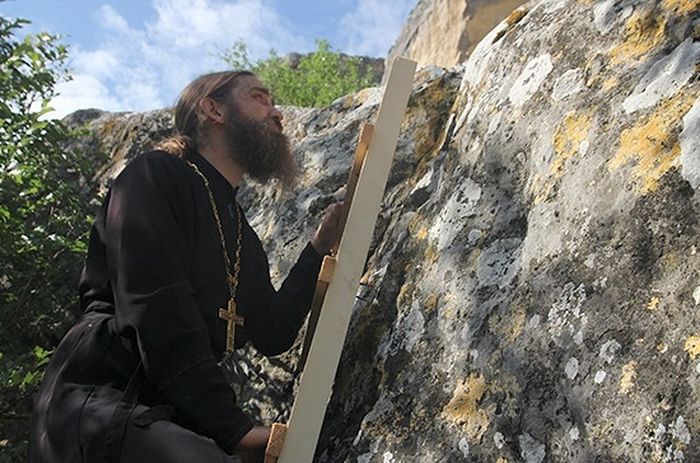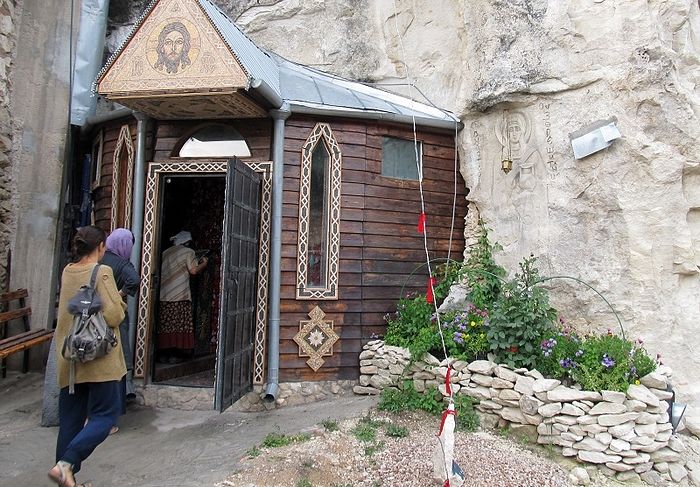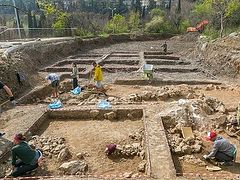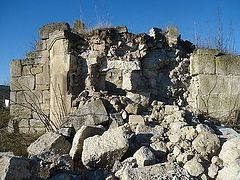Simferopol, September 3, 2018
With the blessing of His Eminence Metropolitan Lazarus of the Crimea and Simferopol, the third part of the “Archeological Bridge, the Path towards the Ancient Crimea” project took place this summer. It was part of the “Nurturing Historical Memory” cultural expedition, and the “Archeological Bridge 2018” cultural and social project was between July 21 and 28, 2018.
The expedition worked on the territory of the ancient Kachi-Kalyon cave town, which is part of the Bakhchisaray Historical and Cultural Reserve. Its aim was to restore unique historic and cultural monuments on the Crimean Peninsula. During the expedition the volunteers cleared over twenty cave structures inside the grottos of Kachi-Kalyon, whose walls had been desecrated by a lot of graffiti, some of which were very primitive (for example, “Ivan was here”). The work was carried out with the support and under the supervision of the Bakhchisaray Historical and Cultural Reserve staff.
More than eighty volunteers from different regions of the Russian Federation took part in the expedition. The cities represented were Moscow, Voronezh, St. Petersburg, Krasnoyarsk, Severodvinsk, Tomsk, Omsk… and, of course, the Crimea: Yevpatoriya, Sevastopol, Simferopol, Yalta, Feodosiya, Kerch. There were even guests from Belarus…
People of different ages and trades were united in the common endeavor to make the peninsula worthier, cleaner, and brighter. Over eight days in the field (tents, camp fires, life in the open), equipped with the necessary tools (brushes, detergents, cleaning fluids), they cleaned the cave walls of the graffiti that had no historical value and defiled the appearance of the ancient historical sites.
It should be noted that this year the project received a grant from the Presidential Grants Foundation – the funds that enabled the participants to improve the cleaning process, using the equipment purchased and manual electric tools; the grant also enabled them to obtain the equipment and materials for the organization of long expeditions of this kind in the future.
“Unfortunately, some people had used oil and acrylic paint rather than chalk to do the graffiti, and those media eat into the rocky surface and it is extremely difficult to remove them. It is a laborious task that requires experience, patience, tools and equipment,” said members of the expedition.
In the evening, after a delicious dinner cooked on an open fire, tours, enthralling rock climbing and terrain orientation master classes were held for the expedition members by Yuri Ermolaev. A full member of the Omsk branch of the Russian Geographical Society, he is the Deputy Chairman of the Omsk Federation of Mountaineering, studying for a Masters in Sports and a second level instructor. Alizbar (Eduard Shukhari), a prominent Russo-Hungarian musician, composer, musical improviser, an expert in harp therapy and player of many instruments, gave inimitable concerts and taught the expedition members how to play instruments. They also enjoyed an exhibition of photographs and master classes on the night sky and star photography by Anatoly Gromov. Alexander Snezhkin, founder and head coach of the “Arkhat” wrestling club, gave lessons in the art of self-defense.
In the course of the expedition, participants were allowed to attend services at the Skete of the Great-martyr Anastasia “the Deliverer from Bonds”.
The evening of July 24 was unforgettable as the volunteers had the pleasure of admiring the total lunar eclipse, a rare natural phenomenon.
The goals of the expedition are not limited to removing graffiti, as mentioned above; they also include forming a new way of thinking, conscious actions to avoid further destructive results. Among the chief tasks the young participants of the expedition set themselves is to create an information hub that calls for preserving places dear to the hearts of many rather than profaning them. These measures include setting up information stands on the work carried out in the early stages of the “Archeological Bridge, the Path towards the Ancient Crimea” project. The presence of such stands at the entrances to preservation areas is designed to make people think more deeply about the detrimental consequences of “vandal art” and how difficult it is to restore historical sites to their original appearance. Stands like these have already been successfully set up on the territory at the foot of the cave towns of Tepe-Kermen and Mangup-Kale.
Reference information:
The cave town of Kachi-Kalyon is a huge rocky area with three natural grottos. The rock is in the form of a ship. The clefts that run across it form a cross on the bow of this gigantic ship. Perhaps this accounts for the name of this cave city, which means “a cross vessel”. This cave city is one of the most significant bronze-age historical sites; cave drawings made by primitive people can be found beneath the huge natural canopy called Tash-Air. There are lots of caves and grottos in the rock, and a medieval monastery used to stand on its top.

